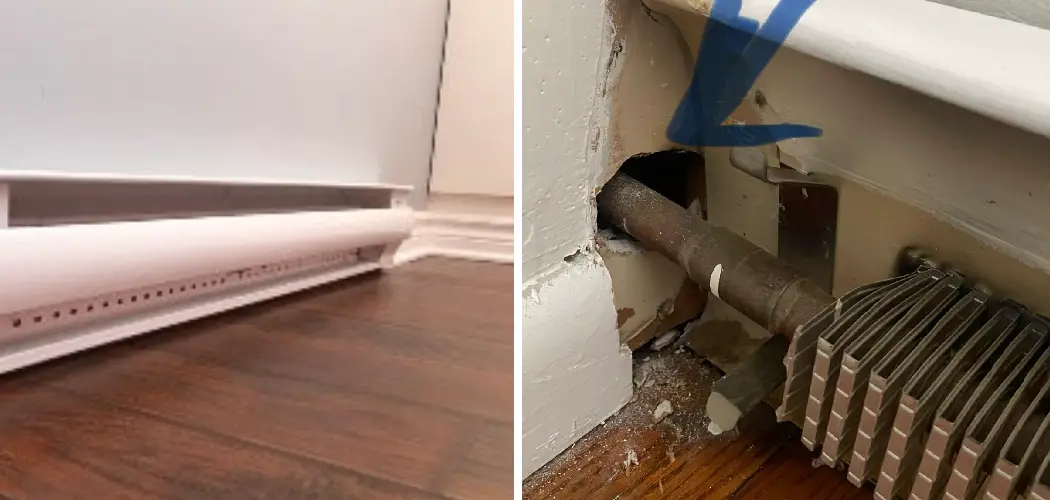Baseboard heaters are a popular choice for home heating due to their efficiency and compact design. However, many homeowners encounter an annoying problem: noise.
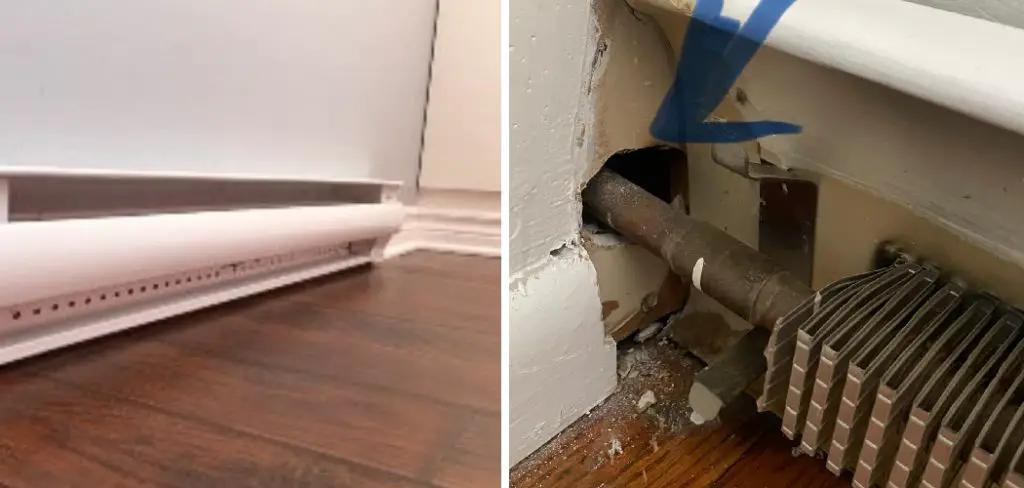
Whether it’s the sound of water running through the pipes, rattling, or other disruptive noises, these sounds can be more than just a nuisance; they can also indicate underlying issues.
Understanding the common causes of noise in baseboard heaters and knowing how to address them is crucial for maintaining a comfortable and peaceful living environment. In this guide, we will explore how to stop baseboard heater from making noise.
Common Issues with Baseboard Heaters
Baseboard heaters can exhibit various issues that contribute to unwanted noise. One common problem is air trapped in the piping, which can cause the system to gurgle or make popping sounds as water moves through. Additionally, if the heater is improperly installed or poorly aligned, it may produce rattling noises as the metal components expand and contract with temperature changes.
Another frequent issue is the buildup of dust and debris within the heater itself, which can obstruct airflow and lead to loud, clanking sounds when the unit operates. Understanding these common problems can help homeowners take the necessary steps to minimize noise and ensure optimal performance of their baseboard heating system.
Understanding the Causes of Noise in Baseboard Heaters
To effectively address noise issues in baseboard heaters, it’s essential to understand the underlying causes of these sounds. One major contributor is the presence of air pockets trapped in the heating system. When water flows through the pipes, it can create gurgling or bubbling noises as it attempts to push through these air pockets.
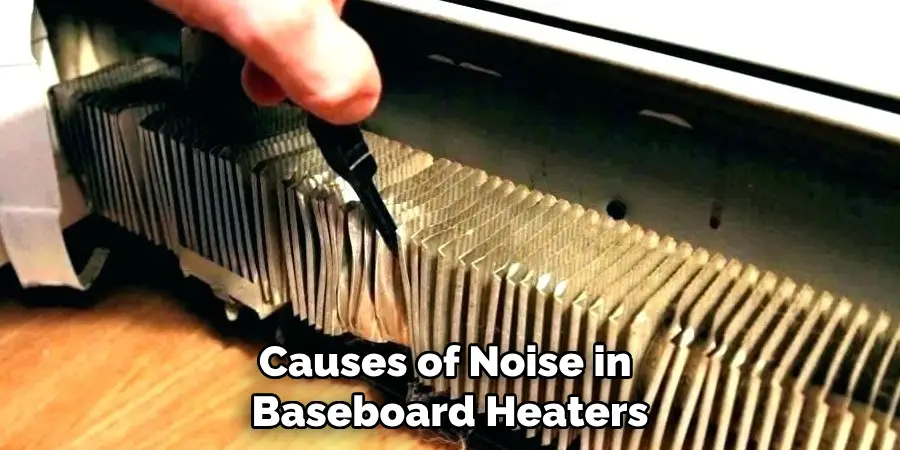
Another critical factor is the thermal expansion of the heater’s metal components. As the heater heats up, the metals expand, which can cause rattling or popping sounds, especially if the installation is not secure.
Dust and debris accumulation can further exacerbate noise levels, leading to clanking or banging sounds when the unit is in operation. Identifying and addressing these causes is key to restoring peace to your home environment.
10 Methods How to Stop Baseboard Heater from Making Noise
1. Check for Air Pockets
One common cause of noise in baseboard heaters is trapped air within the heating system. Air pockets can cause gurgling, bubbling, or clanking sounds as the heater operates. To address this, start by locating the air bleeder valve on the heater. This valve is usually found at the end of the baseboard unit or on the pipe leading to the heater.
Using a small container to catch any water, carefully open the valve to release trapped air. You may hear a hissing sound as the air escapes. Once the air is fully bled from the system, close the valve securely and check if the noise persists.
2. Inspect and Tighten Loose Screws
Loose screws can cause rattling or clanking noises as the heater operates. Over time, screws that secure the baseboard heater to the wall or hold the cover in place can become loose due to vibration or expansion and contraction of the heater. Inspect the heater carefully and use a screwdriver to tighten any loose screws.
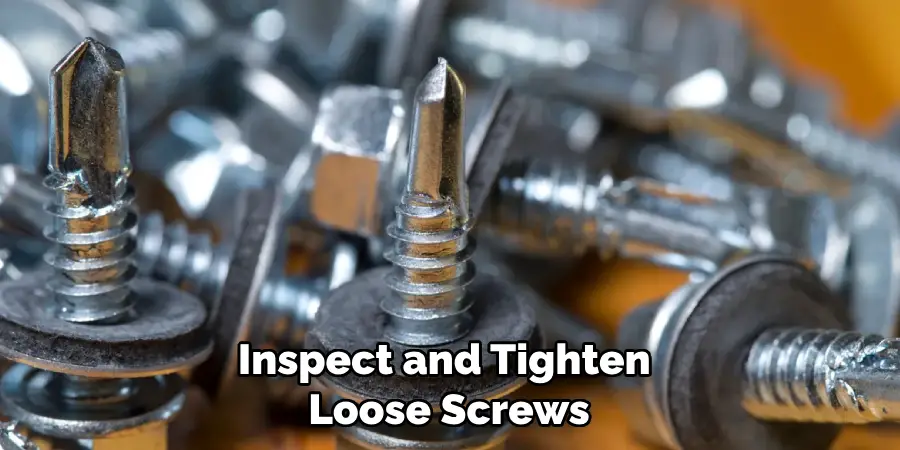
Ensure that all mounting screws are secure and that the heater is firmly attached to the wall. Tightening these screws can help reduce noise and improve the stability of the heater.
3. Clean the Heater
Dust and debris accumulation can contribute to noise in baseboard heaters. Dirt and particles can obstruct airflow and cause the heater to operate less efficiently, resulting in unusual sounds. To clean the heater, first turn off the power to the unit to ensure safety.
Remove the cover of the baseboard heater and use a vacuum with a brush attachment to remove dust and debris from the fins and internal components. Wipe down any accessible surfaces with a damp cloth. Regular cleaning helps maintain optimal performance and reduces noise caused by dirt buildup.
4. Adjust the Heater’s Position
Sometimes, noise can occur if the baseboard heater is not installed or positioned correctly. If the heater is not level or is slightly misaligned, it can produce rattling or banging sounds as it heats up. Check the alignment of the heater and ensure that it is level and properly positioned against the wall. If necessary, adjust the mounting brackets or shim the heater to achieve proper alignment. Ensuring that the heater is correctly positioned can help minimize noise and improve its overall performance.
5. Examine the Heating Elements
The heating elements within a baseboard heater can expand and contract as they heat up and cool down, which can sometimes cause ticking or popping noises.
Inspect the heating elements for any signs of damage or wear. If the elements are misaligned or damaged, they may need to be adjusted or replaced. Refer to the heater’s manual for guidance on inspecting and servicing the heating elements. Proper maintenance of the heating elements can help reduce noise and ensure efficient operation.

6. Install a Noise-Reducing Insulation
Installing noise-reducing insulation around the baseboard heater can help absorb and dampen sounds. Acoustic insulation materials, such as foam or fiberglass, can be applied to the wall or floor near the heater to reduce noise transmission. Be sure to choose insulation materials that are safe for use with heating systems and do not obstruct airflow. Installing noise-reducing insulation can help minimize the impact of operational sounds and create a quieter environment.
7. Check for Obstructions
Obstructions near the baseboard heater can interfere with its operation and cause noise. Ensure that there are no furniture, curtains, or other objects blocking the heater or restricting airflow. Proper airflow is essential for the heater to function efficiently and quietly. Move any obstructions away from the heater and ensure that it has adequate clearance on all sides. Removing obstructions helps the heater operate smoothly and reduces the likelihood of noise.
8. Address Expansion and Contraction Issues
Metal baseboard heaters can expand and contract with changes in temperature, leading to ticking or popping noises. To address this issue, you can apply a lubricant, such as graphite or silicone spray, to the metal parts that are causing the noise. Carefully apply the lubricant to the areas where metal parts come into contact, such as brackets or mounting points.
Lubrication helps reduce friction and noise caused by expansion and contraction. Be sure to follow the manufacturer’s recommendations for suitable lubricants and application methods.
9. Inspect and Replace Damaged Parts
Damaged or worn parts within the baseboard heater can contribute to noise. Inspect the heater for any signs of damage, such as cracked or broken components, loose fittings, or worn-out parts. If you identify any damaged parts, replace them promptly to restore proper operation and reduce noise.
Refer to the heater’s manual or consult a professional for guidance on obtaining and installing replacement parts. Ensuring that all components are in good condition helps maintain a quiet and efficient heating system.
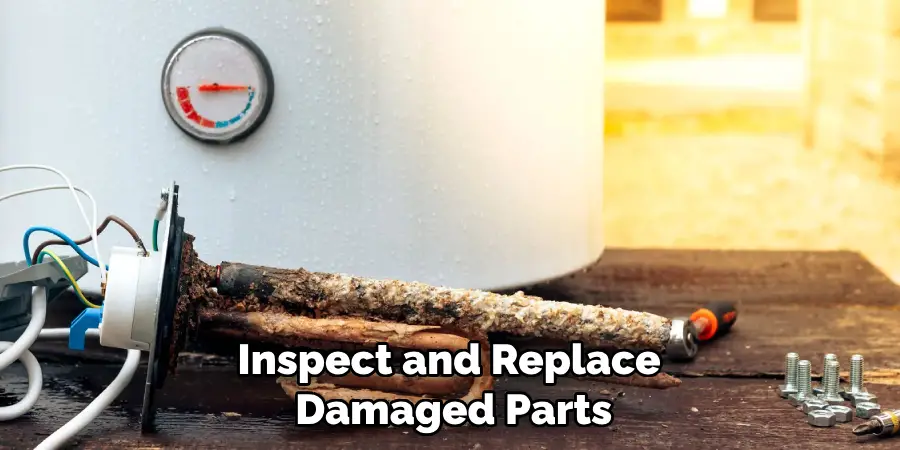
10. Consult a Professional Technician
If you have tried the above methods and the noise persists, it may be time to consult a professional HVAC technician. A technician can perform a thorough inspection of the baseboard heater and identify any underlying issues that may be causing the noise.
They have the expertise and tools to diagnose and address complex problems, such as issues with the heating element, thermostat, or electrical components. Professional assistance ensures that your baseboard heater is properly serviced and that any persistent noise issues are resolved effectively.
Things to Consider When Maintaining Your Baseboard Heater
When maintaining your baseboard heater, there are several important factors to consider to ensure optimal performance and safety. First, always prioritize safety by disconnecting power to the unit before performing any maintenance tasks. This helps prevent electrical shock and ensures a safe working environment. Additionally, consider the type and age of your heater; older units may require more frequent inspection and maintenance to keep them operating efficiently.
Another essential aspect is to understand the manufacturer’s recommendations for maintenance and servicing. Each heater model may have specific guidelines regarding cleaning, repairs, and component replacements. Familiarizing yourself with these recommendations can help extend the life of your unit. Furthermore, consider scheduling regular maintenance checks, either by yourself or a professional technician, to identify potential problems before they become costly repairs. Keeping an eye on the overall condition of the heater and addressing issues promptly will contribute to a quieter and more efficient heating system.
Conclusion
In conclusion, stopping a baseboard heater from making noise involves a combination of inspection, maintenance, and adjustments. By addressing issues such as trapped air, loose screws, dust accumulation, and obstructions, you can effectively reduce or eliminate unwanted sounds.
Additional measures, such as installing noise-reducing insulation and lubricating metal parts, further contribute to a quieter heating system. If necessary, consulting a professional technician ensures that your baseboard heater remains in optimal condition and operates quietly and efficiently.
Thanks for reading, and we hope this has given you some inspiration on how to stop baseboard heater from making noise!

